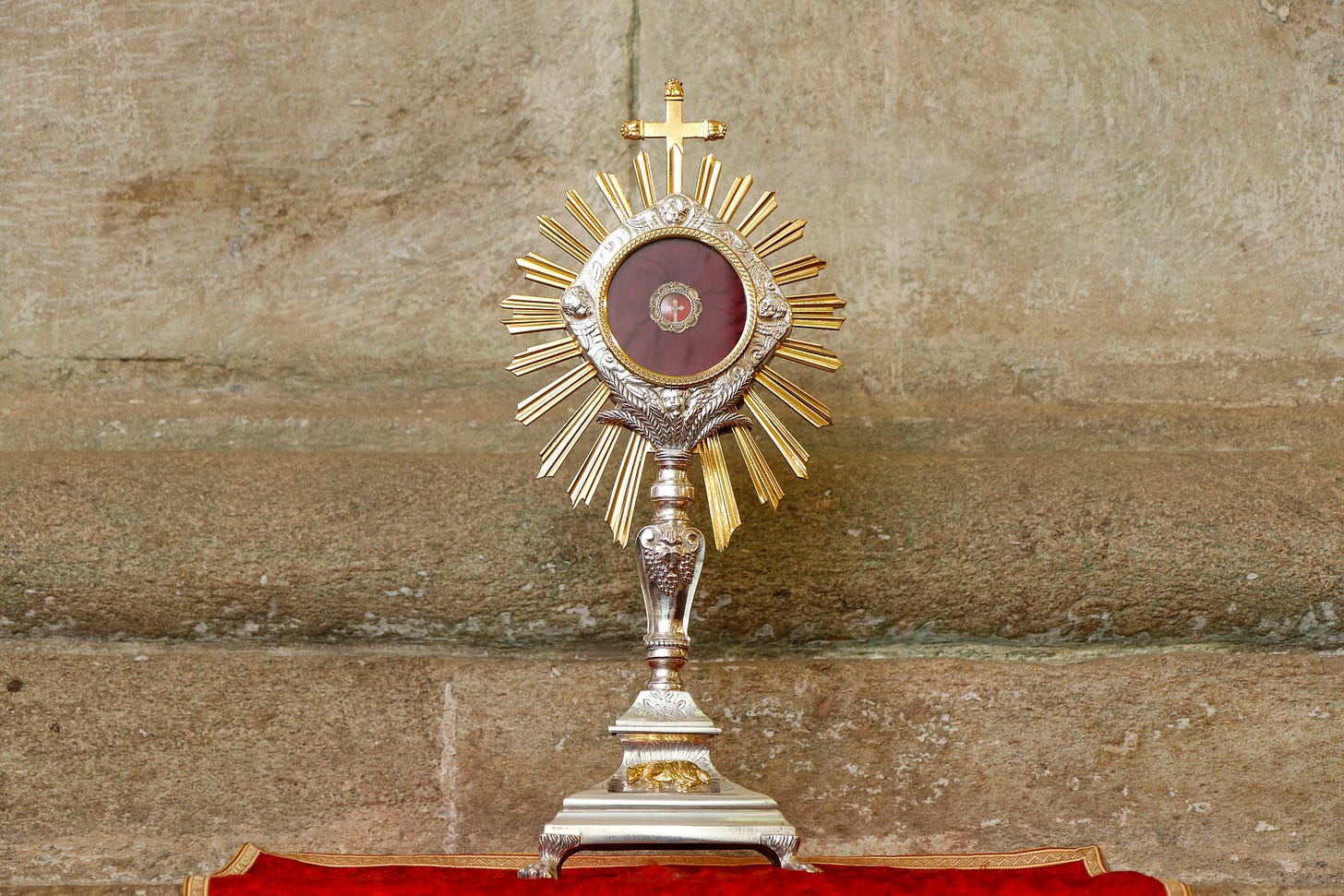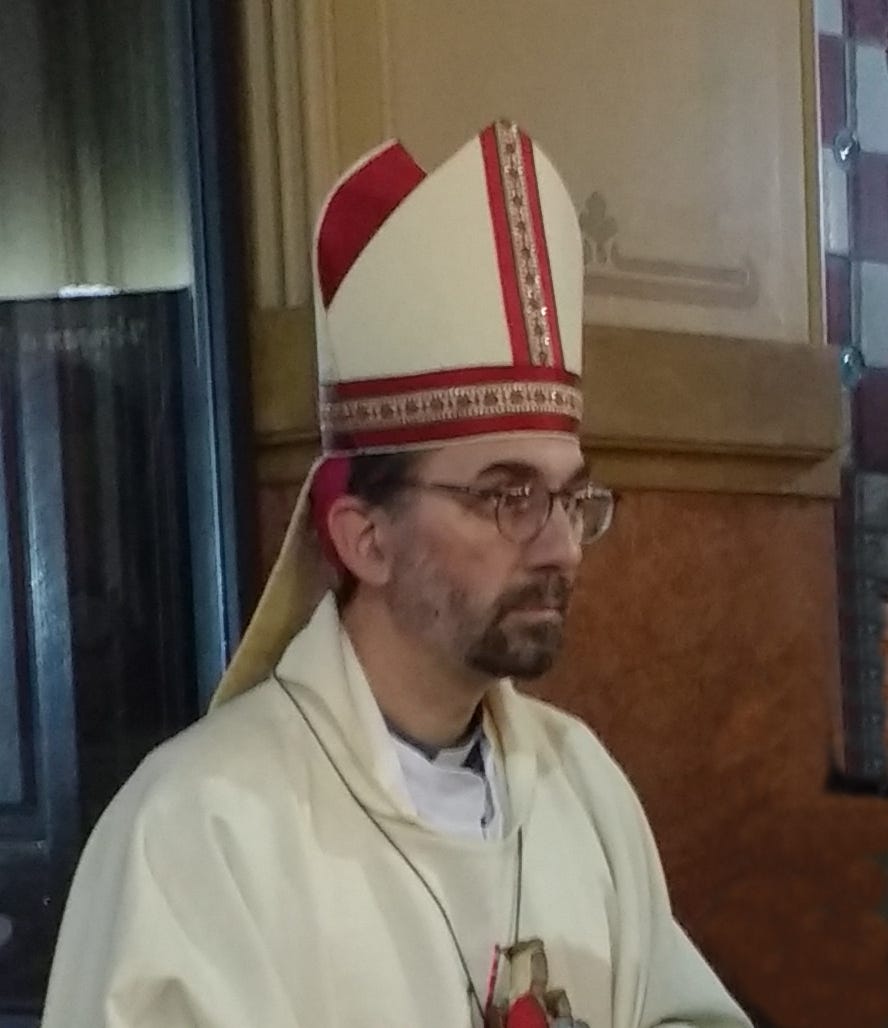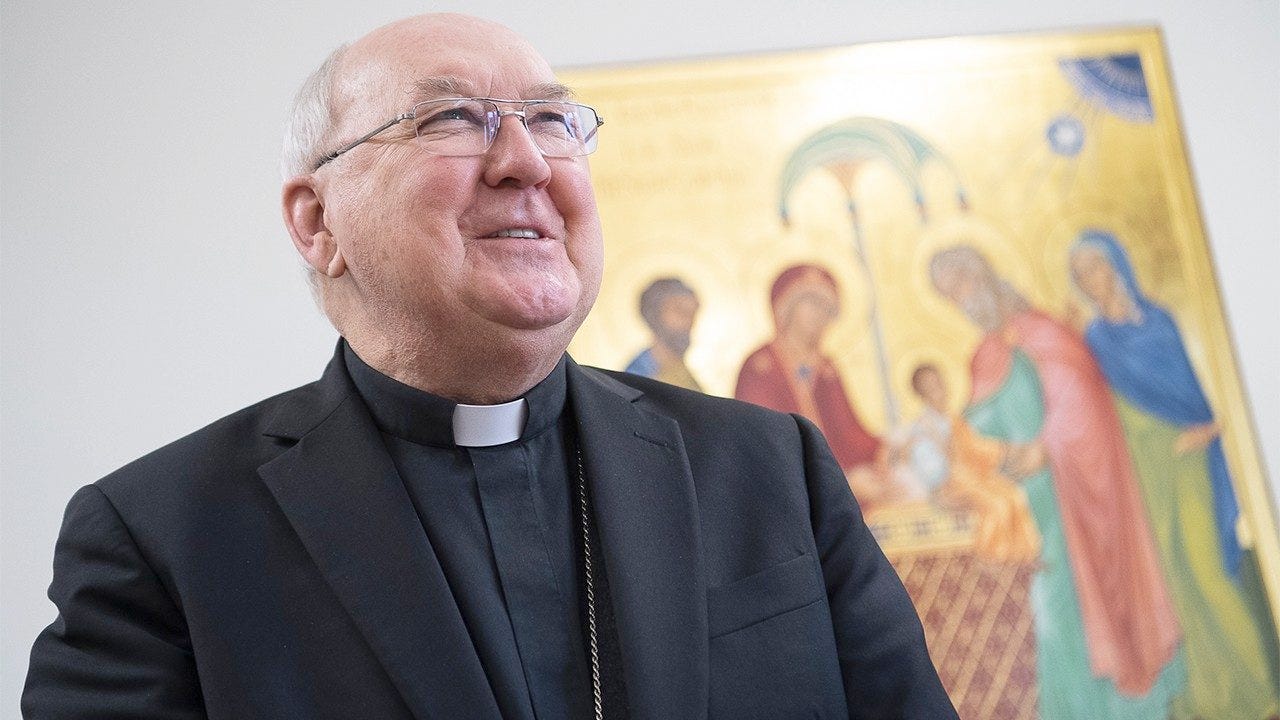A relic of the True Cross was stolen from the co-Cathedral of the Sacred Heart in the Archdiocese of Galveston-Houston May 29.
The relic, a piece of the cross on which Christ was crucified, was taken Sunday, according to a video statement from Fr. Jeff Bame, the cathedral’s rector, on June 1.
The theft of the relic is the latest in an ongoing spate of acts of vandalism and theft from Catholic church buildings across the United States. Last week, a tabernacle, valued at more than $2 million, was stolen from St. Augustine church in Brooklyn, New York. Another fragment of the true cross was among several relics stolen from St. Elizabeth parish in the Diocese of Venice, Florida, also last week.
The stolen Houston relic was originally a gift to Archbishop Joseph Fiorenza, who led the Galveston-Houston diocese for more than 20 years until 2006. It had been at the co-cathedral since its dedication in 2008, and was embedded in the processional cross.
“Unfortunately, some time between the end of our 11am Mass and the beginning of our Spanish Mass at 1pm, this relic was stolen,” said Fr. Bame. “We’ve been unable to find who may have done it; security cameras didn’t capture anything.”
Appealing for information, or for the culprit to come forward, Bame said “Our biggest concern is not for catching or punishing someone, but simply the safe return of this object.”
“Relics of this kind aren’t meant for our own possession but for the public veneration of the faithful,” Bame said.
But many Catholics have questions about relics, where they come from, what exactly “veneration” means, and how they change hands.
To answer these questions, The Pillar talked with Fr. Nicholas Vaskov, director of St. Anthony’s Chapel on Pittsburgh's North Side, which is home to the largest collection of relics in the world outside of the Vatican, with more 5,000 relics.
Why did the Church start collecting and preserving relics for veneration in the first place?
From the earliest days of the Church there has been the veneration of relics.
The Church has always held the body, even after death, in esteem, because of our belief in the resurrection of the dead. But particularly those relics of those who were considered holy, we’ve had this tradition of veneration.
And we know of the emperor Constantine's mother, St. Helen, even going to the Holy Land and procuring the objects related to Christ's passion and bringing them to Rome — the holy stairs, the true cross — and that was, you know, in the fourth century.
So, I mean really from the earliest days of the Church, there has been this desire to protect and to venerate particularly the lives of those who were considered to be holy, to be venerable, because in some way this nearness to them on earth we trust will allow us to emulate their example as we strive for holiness in our own lives.
You mention that relics of saints are often articles like bone fragments, or even entire body parts, like their heart or a hand.
Parts of a saint’s body are often reserved in different places. Even for pious reasons, does that align with the Church’s teaching on Christian burial and the resurrection of the body?
That always tends to be a question people ask. Because, and even recently, the Holy See has reminded the faithful of the importance of the burial of the body, our human remains, as entire and intact. We shouldn’t have a little vase for our mantle, or a little pendant that someone wears around their neck that has cremated remains or something in it.
But at the same time, we understand in this case that a part of the physical body of a saint may inspire us to prayer — it’s not sentimental, they are being venerated. We are physical beings. We like things that we can see. Ultimately it is for the good of the faithful; that they may be something that we give honor to, particularly as we seek their intercession.
As I said, that the nearness to them, physical nearness, can be so helpful for us on our journey of life and faith, to increase our desire to live in a like manner.
And typically it's not like anymore, that an entire saint’s body is being cut up and distributed. For the most part, their body is kept intact whole. I mean, I think of Carlo Acutis. You might get a relic of him, but it might be a piece of hair, or maybe a piece of clothing, but they keep his body whole.
So, there was that practice in the past where, you know, St Catherine of Sienna's heart is here and her body is there, in Rome and in Sienna, but it’s not the same today.
It’s a common misconception that Catholics “pray to” or “worship” relics.
But instead we have this distinct word, to “venerate” a relic, what does that mean properly speaking?
This is exactly it. We use distinct words to describe our desire to “venerate” a relic of a saint and to seek their intercession, as opposed to adoration and worship of the Eucharist and of Christ's body and blood. That it is an important distinction.
To venerate means “to come before.” We don't worship it. We don't think that it will do something for us that God cannot do — it is through the intercession of that saint that they might beg God to provide for us what we need. So, it is that idea of coming before and doing honor with the sense that we might receive from that saint’s help what we were asking for.
It may be a particular intercessor like St. Anthony, and when we seek what is lost, maybe in a time of illness there are different saints that we might call upon, but it is that “coming near to,” it's an action of the heart to say we trust that they are with God and that their work is still very powerful in going on behalf of us before God's throne to see that we are provided for.
So it is an important distinction. It is not worship, like somehow this piece of bone is going to pour forth something that God would not give. No, it's all through asking the help of the saints, and knowing their nearness to us.
The Church talks about first, second, and third class relics, depending on how proximate the object was to a saint.
What’s the point of these categories — are some relics more “powerful” than others, or is this just about saintly bragging rights?
Speaking of parts of a saint's body, “first class” relics, right now it is less likely that their body would be distributed to the same extent that saints in past generations have been.
But it’s customary for these relics to be distributed for placement under altars. This has always been an important part of a church, that when an altar is consecrated, that there’s a relic of a saint, whether it's a saint that may be the patron of that church, or may have some important connection to the faithful in that place.
Things that they touch, things that they owned, are what we call second class relics, often for veneration of the faithful; things through which people would come to honor this saint on their feast day, or for novena, things like that. So second class relics would be things like a habit that a saint wore, clothing that they wore, something that they owned.
Those things have great importance because it tends to be things that we would consider “sacred.” Not the television that they owned, but these are things that they used in their own journey of faith. And so that really helps us, again, to understand their life and what they sought, what they strove for in terms of faith and living.
Third class relics are something that is touched to a first class relic, it could be a piece of cloth or something, that while still sacred and still that reminder of the life of that saint is also something that we can carry with us.
So I think those different ranks show degrees of, in a sense, seriousness. You don't want to lose any of those things; we consider all of them sacred. But a first class relic, that piece of a saint's body, their hair, whatever it might be, we really want to protect and so they're guarded with a little more care.
Are they more powerful? Well the power comes through the saint’s intercession, and their physical body is a reminder of their holiness.
Material things are not bad. The material world that has been created is not bad. It is sanctified. It is created by God. It is good, and that we can live in that goodness. So it's not that any of them are more important than any others. But, in terms of the care we take with them, there’s a difference.
There’s an old Protestant joke that if you put all alleged fragments of the True Cross together you could make a second ark. But actually by some estimates they wouldn’t add up to a single cross beam.
Is there an official process for the Church to recognize a relic, or is much of this down to pious tradition?
Sure. Authentic relics have a process by which they are authenticated, through wax seals that mark and seal the back of the teca, the little container that the relic is held in, as well as documentation paperwork.
Say a relic does not have the paperwork, but has the seal, a Church authority, can look at that seal and know whether it shows an authentic sort of genealogy of that relic being passed forward from where it was meant to be and meant to go— and there is a priest in the United States who does this, and there are priests throughout the world and in Rome who do it.
So there is a process to authenticate relics, and any relic that is available for public veneration should have that documentation and that authentication.
There are other relics that, you know, may be floating around that, over the years, have lost any number of those authenticating marks. And those should not be used for veneration by the faithful because there is simply no guarantee that they are authentic. And again, because this is something that we believe is holy, is a sacred thing, we want, as much as we can, to be able to guarantee that it is what we say it is.
Why would we want to be close to the True Cross? Jesus says that to be in my disciple, you have to carry your cross each day, so to be able to spend time gazing upon even this, this tiniest sliver of Christ’s cross can be for us the strength we need to bear our own crosses. So we want to know that that's what it is, and the Church has a process for doing that.
Even when authenticated, are relics something Catholics are required to believe in?
Are we meant to recognize relics of the True Cross, for example, with the same kind of religious certainty as we do the true presence in the Eucharistic host?
It's hard to not believe it. The communion of saints is a great aspect of our faith in the Catholic Church — we have this cloud of witnesses who is constantly working on our behalf so that we might be counted among their number. So why wouldn't we want to believe in that, why wouldn't we want their help?
Whether it is just the encounter with one relic that may be shared on a particular saint’s feast stay, or, in the case of where I get to serve at St. Anthony's chapel, when we call upon the saints, they're right around us, they're surrounding you.
Our veneration of the saints and their relics only heightens all the more that connection with our faith, to the faith of our ancestors, and that we continue to celebrate what they celebrated, that we carry on the great tradition of the faith here and now.
Canon law says it is “absolutely forbidden to sell sacred relics,” but the Holy See can give permission for them to be “alienated.”
What’s the difference, isn’t alienation just a fancy ecclesiastical way of saying sold?
It's a good question. It is forbidden to sell relics. Unfortunately if you go on eBay or things like that, you'll see people who are looking to do that. And there are people who try to go on and buy them simply to protect them. Or sometimes they'll put up a disclaimer that they're selling the reliquary and not the relic itself, right?
But alienation also means the transferring of relics. Very oftentimes here at St. Anthony chapel, people know that we are the church with the relics, and so when a loved one dies and they're going through their belongings and they find a relic, they will often reach out to us and ask us to take possession of it. We won't pay for them, but we take possession of them so they can be safeguarded and, and added to our collection.
Again, if they have authentication papers and things like that, then they can be made available for veneration. If not, we slowly go through the process of trying to get them authenticated when we can.
Sometimes churches might be dedicating a new altar and they will ask us for a relic. Now, they cannot be sent in the mail, so we're happy to offer a duplicate relic that we have to a church who might be constructing an altar, but they have to come retrieve the relic themselves so that the chain of custody and the patrimony can be maintained and we know it won't be lost.




